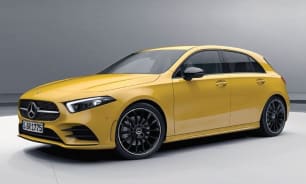The Polo launch drive program covered around 150km of city, suburban and freeway running from inner Sydney, through twisting B-roads to the city’s south, and sprawling semi-rural areas further west, topped off with a closed track session at the Luddenham Raceway.
Weighing in at a fraction over 1.3 tonnes, with 147kW/320Nm sent to the front wheels, the Polo GTI is capable of sprinting from 0-100km/h in 6.8 seconds, which is satisfyingly quick.
And the 2.0-litre, four-cylinder turbo-petrol engine’s dyno sheet must be a thing of beauty with maximum torque available from from 1450 to 4390rpm, and peak power picking things up at precisely the end of that plateau, remaining on tap all the way to 6000rpm.
So, mid-range punch is always there, and the six-speed ‘DSG’ dual-clutch auto delivers rapid, precise shifts, with wheel-mounted paddles dialling up the fun factor when you want to shift ratios yourself.
Combined engine and exhaust noise is agreeably rorty without tipping over the annoyance threshold, although the high-performance 215/40 Continental ContiSportContact rubber transfers a fair amount of rumble on coarser surfaces.
The base suspension set-up is strut front/torsion beam rear, with the standard ‘Sport Select’ system built around switchable dampers, offering the choice of ‘Normal’ and ‘Sport’ modes.
Normal is nicely composed with comfy compliance over longer undulations as well as higher frequency bumps and dips. But if the red mist descends and you’re ready for some fun the (noticeably firmer) Sport setting buttons everything down that bit more.
As well as the damping, throttle response is faster, the DSG picks up the pace as does the steering. Even the exhaust is enhanced, although it’s via the synthetic ‘Sound Actuator.’ Boo!
Balanced and predictable in quick cornering, the Polo GTI’s electro-mechanically assisted steering is precise and beautifully weighted, with great road feel. And the car’s ‘Extended Differential Lock’ uses the traction control and braking systems to minimise wheel spin, maximise traction, and help limit understeer.
On top of all that, the carefully sculpted sports seats deliver secure location without compromising comfort, and the grippy sports wheel feels great.
Braking is by ventilated discs at the front with solid rotors at the rear, and even under the pressure of a flat-out track session (moderated with the help of some admirably patient tame racing drivers) they remained progressive and firm.
In more civilised surroundings the Polo’s size and excellent all-around vision (not to mention a clear reversing camera) make it a cinch to park. The combination of on-screen touch controls, and physical dials for the multimedia system is welcome. And the connection for Apple CarPlay and Android Auto is wired or wireless which is handy for those who prefer the surety of a wired connection or the flexibility of one less cable in their life.




































































